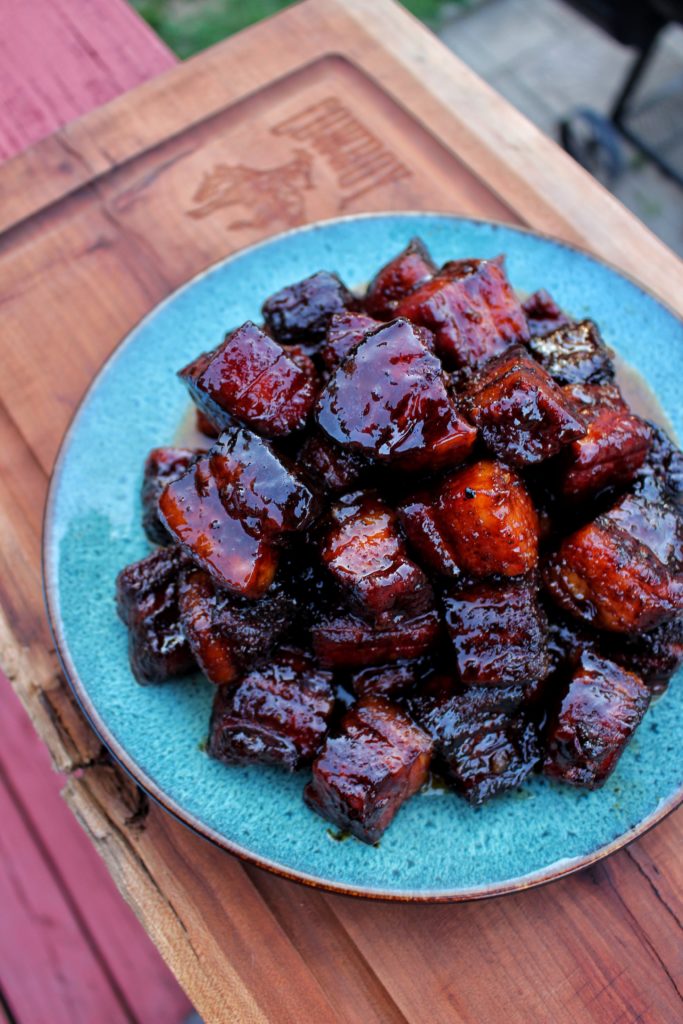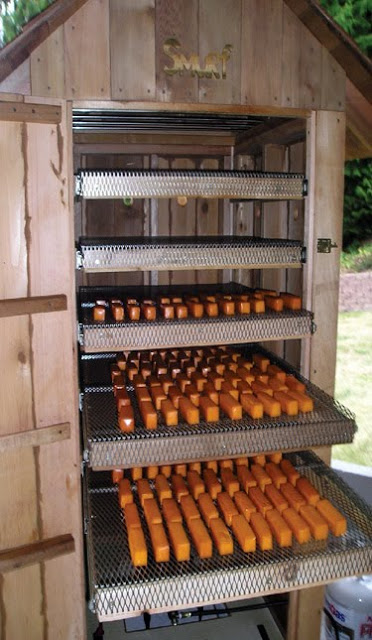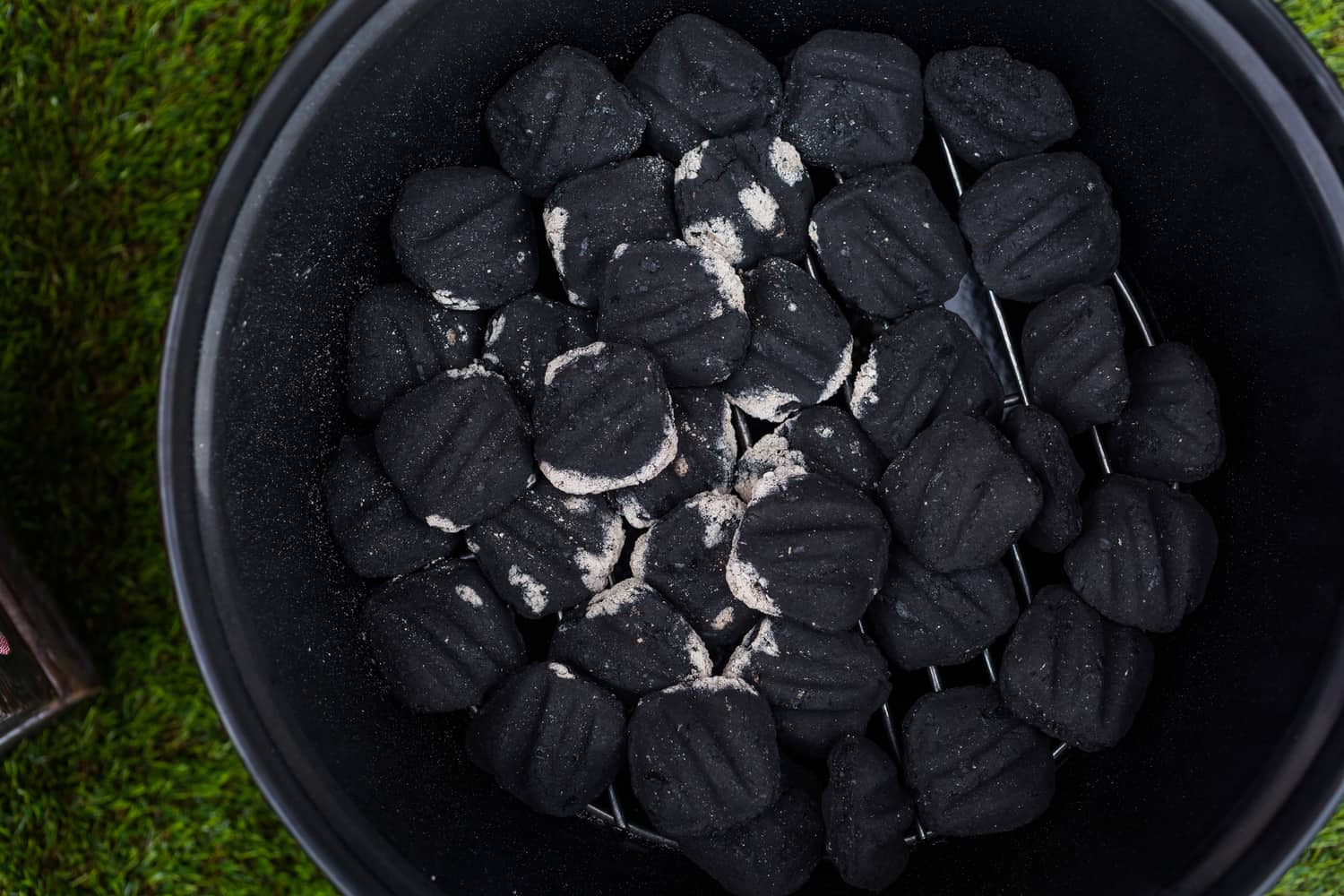
To use your charcoal smoker successfully, there are a few tips that you should know. The key part of the process is correctly fueling it. You must also monitor the temperature. These charcoal smoker tips can help you achieve this. Be sure to clean the grill and add hardwoods to it when you need them. Remember that the wood smoke will smoke the meat and impart its flavor. So how can you make sure your meat is tender and succulent?
Proper charcoal smoker fuel
While briquettes might be the cheapest option for charcoal, they don't have to be your only choice. Charcoal briquettes often contain hardwood, which can be difficult to find and more expensive. Briquettes also burn longer than lump charcoal. While briquettes can be lighter and easier to light than lump charcoal, you might need to use a lighter fluid. Lumps of charcoal is better for those with limited budgets.
Lighter fluids should not be used in charcoal smokers. These products contain chemical ingredients that can taste off your meat. Use natural fire starters instead to light the fire. Be sure to follow all manufacturer's instructions for lighting the coals. Also, never use lighter fluid to start the fire. Also, lighter fluid can cause chemical flavors to your meat. When lighting your charcoal smoker, be sure to follow these guidelines. These are some tips to get the most out of your charcoal smoker.
There are many options for smokers. Gas and charcoal are both great options. But each option has its advantages and disadvantages. Charcoal can be cheaper than charcoal, while you can also purchase gas. The charcoal smokers don't require a fuel tank, and they can be quite large. To achieve maximum performance, they need space at least 6x4ft. You can get the perfect fuel for your smoker so you can enjoy the wonderful taste of smoked meat. So, get cooking! Try charcoal smokers if you like the smell of smoke!
Hardwood charcoal lumps are another alternative to charcoal-briquettes. Lumps closely resemble chunks of wood from an extinguished bonfire. These lumps are about the size of a golfball or a grapefruit. They give off a pleasant smoke, and they are great for slow or low cooking. They can also be used for high heat grilling. For beginners, briquettes are the best choice.
Wood chunks make it easy to get that smoky flavor. Wood chunks have the bark and smoke smell of charcoal smokers. Wood chips can also be used as secondary fuel and are a great choice. While different fuels can produce different results in cooking, the main goal of any meat smoker is to extract the best flavor possible. You'll enjoy a lifetime of delicious food once you learn how to use a charcoal smoker.
Keep an eye out for the temperature
It is crucial to monitor the temperature while smoking meat to ensure it cooks perfectly. Smokers create smoke by heating the food, which can lead to it burning. The temperature of the smoke drops if you open the lid. It can take up to 20 minutes for it to return to its original temperature. Wind is another important aspect to be aware of when you smoke. Smokers should remain indoors. You need to be more vigilant about the temperature during windy days.
The ideal temperature for charcoal smokers is 225 to 300 degrees Fahrenheit. This is a good temperature range for cooking most meat, including chicken. Turkey can be cooked at a lower temperature, but chicken is not quite as dense and will be dry as a result. A key skill for perfecting your smoker is to be aware of the temperature. This will allow you to prepare the perfect smoked meat. Practice will help you cook perfect meat every single time.
Weather affects the smoker's internal temperature. When you smoke in winter, ensure there is enough fuel. A water pan can be used to heat your smoker and increase the amount you have. The best way to ensure you have the best results is to limit your smoking time to only a few hour per day.

The amount of charcoal contained in your smoker will affect the temperature. You can adjust the size of the vent to make them smaller or bigger, depending on how large your charcoal is. A closed intake vent can allow more oxygen to the smoker and slow down its temperature rise in some cases. However, if your smoker is still too cool, adjust the vent before you cook. After a while, it will be second nature.
A temperature probe is an important part of any smoker, so be sure to buy one to monitor your charcoal grill. It will help you monitor the temperature and notify you if it drops too low or rises too high. You can adjust the temperature in your smoker with a good thermometer. You can adjust the temperature of the smoker to suit your needs without worrying about food drying out or being overcooked.
Clean the grill grid
Clean the charcoal smoker's grill grate regularly! Charcoalash can build up on charcoal grills. If not cleaned regularly, this ash will block the grill vents, increasing fire risks. You can clean the grill grill grate with a stiff-wire brush and a long handle. An aluminum foil grill grate brush is a great choice. A little vegetable oil and a rag with a small handle will help prevent food accumulation and rust. You can also use mild dish soap to clean the grill bowl and lid, and a steel brush.
To clean the grill grill grate, you can use a scraper and a grill brush. The best option is to use sliced onions. They add moisture and produce organic compounds that help break down stubborn grease. But it's not as effective as a good scrub. You should regularly clean and relight your charcoal smoker and cover it with a weatherproof cover.
The first step to cleaning the grill is to clean the dirty water. To remove any ash that remains on the grill grate, you can use a shop vacuum to clean it. While cleaning the grill grates, be sure to use gloves. In a spray bottle, combine white vinegar with water. In an ideal situation, the vinegar should be mixed with 40 percent water. Use a degreaser made specifically for cleaning food surfaces, such as Simple Green.
It can be tedious to clean the grill grate on a charcoal smoker, but it will be well worth the effort. To prevent food sticking and pitting from happening, you should clean the grill between each use. This will help protect your charcoal smoker's rust. It is not necessary to replace your charcoal smoker. A monthly cleaning will maintain its good performance. To prevent further rust, soak the grate in warm water before cleaning it.
It is important to remove all ashes from the charcoal smoker before cleaning it. Charcoal smokers can be particularly vulnerable to ash buildup so it is important that you take extra care when cleaning them. Also, use a brush to clean the sides, drip pan and hood of your charcoal grill. To prevent food buildup on the grates, it is important to clean them after each cookout. You may also want to consider using a spray of vegetable oil on the grill grate to protect your charcoal smoker.
Hardwoods can be added to the fire.
Using a charcoal smoker is an easy way to create a flavorful atmosphere in your kitchen. Smokers can cook anything from fish to vegetables as well as delicious desserts. While meat is by far the most common item smoked, woods add different flavors to different foods, bringing out the best flavors in various dishes. You can personalize your charcoal smoker experience by adding wood chips.

Using wood chips in your charcoal smoker is a good idea because it won't soak up water and will continue to provide smoke long after the chips are burned. This is crucial if your intention is to cook for long times. Use golf ball-sized wood if you use a charcoal smoker for smoking meat. Small chips and pellets are better for short cooking sessions. Shorter logs are easier to keep in the hot zone.
Hardwoods can be added to charcoal smokers, which is a very popular way to barbecue. To create a distinctive, smokey flavor, meat was traditionally smoked over charcoal and then flavored using hardwood. Hardwood logs will give you the most authentic smoke flavor. Although it will be more expensive than standard coal, they will cook your meat for a longer time. Because lump hardwood charcoal takes longer to burn, you'll require less wood to produce more smoke flavor.
You will notice a marked difference in the taste and aroma of hardwoods when you use them in your charcoal smoker. Some charcoal manufacturers use a combination of hardwood and softwood to produce a hybrid flavor that is both rich and delicious. Although charcoal is able to burn volatile gases, it also contains carbon which makes it more hot and lasts longer. Using hardwoods will preserve the color and flavor compounds of the meat that you're smoking.
Use hardwoods in your charcoal smoker. It's important that you remember that fresh cut hardwoods have more water than dried woods. This causes a lot of steam, and can lead to off flavors. It is dangerous to use fresh hardwoods in a charcoal smoker, especially if your cooking skills are not strong enough. Fortunately, there are some other woods that will improve your results. Make sure you try out different types to determine which one is the best.
FAQ
Can I learn to cook with my kids?
Yes! Kids love to help in the kitchen. It's fun and teaches kids responsibility as well as teamwork. The whole process can be done by children, including washing and chopping vegetables. You will have your children enjoy helping you cook as long as they follow safe procedures when using knives.
How to become a chef
There are many routes to becoming a chef. You can begin by taking a course at a community college or vocational school. Then, look into attending culinary school. Finally, you can take a paid internship.
What is the average time it takes to become a chef? What is the average career path?
A chef's career takes about five years. You will learn basic cooking techniques, and get experience as a chef assistant. You can apply for line, sous or executive chef positions after you complete your training. The average salary for a chef ranges from $25,000 to $60,000 per year.
How Much Does it Cost to Learn Culinary Arts Skills?
Prices for studying culinary arts vary widely. A four-year degree in culinary arts typically costs around $40,000. A two-year associate's level degree can cost less than $5,000. Tuition rates depend on the type of program you select. The tuition rates for private institutions are usually higher than those of public universities.
What skills do I need to get into culinary school?
A chef's job requires you to be able cook well under pressure and understand food safety regulations. You should enroll in cooking classes at local community colleges or high schools to learn how to cook. Once you have learned the basics of cooking, it is time to look for work at a restaurant.
Statistics
- According to the BLS, chefs earn $58,740 a year. (learnhowtobecome.org)
- under 10 Kids have been taught that there is special food just for them, and Fiese says that 10 percent of kids will throw a tantrum if they don't get the food they want. (washingtonpost.com)
- The median pay for a chef or head cook is $53,380 per year or $25.66/hour, according to the U.S. Bureau of Labor Statistics (BLS). (learnhowtobecome.org)
External Links
How To
How to make an omelet that is perfect
Omelets are a favorite breakfast food of mine. But how do you make them perfectly? There are many recipes and methods I tried, but none worked. I have some tips and tricks to help you make delicious, fluffy omelets every single morning.
First, eggs can be very temperamental ingredients for making omelets. The eggs must be fresh from an organic source and kept at room temperature until they are ready to be cooked. The yolks and whites will not form properly if they aren't kept cold enough. This makes your omelets look weirdly colored. If you intend to cook your eggs immediately, it's best to use room-temperature egg.
Another tip is to separate the egg before adding it to the pan. It is important not to allow any white to mix with the yolk as this could lead to the omelet becoming curdled.
The egg can burn if it is placed directly on the stovetop. Instead, microwave the egg for 10 seconds before adding it to the pan. The microwave heat cooks the eggs just right without overcooking them.
Next, let's discuss mixing the eggs. Mixing eggs together is important. You need to beat them well. You can do this by turning the bowl of your mixer upside down. Then, vigorously shake the bowl. By doing this, the egg is thoroughly mixed with the air in the bowl.
Now comes the fun part: adding the milk to your mixture. Fold the eggs in the milk mixture by first pouring half of it into the egg whites. Do not worry if you see streaks of egg; they will disappear when the omelet is flipped.
After you have folded your eggs, heat up the oil on medium heat. Wait for it to get hot. When the oil is hot enough, add 1/4 cup butter to the pan. Stir it around until the butter covers the entire pan. Now carefully crack open the lid of the pan and sprinkle salt into the pan. The salt will help to prevent the omelet's sticking to the pan.
Cover the pan once you have formed the omelet. Wait for the top to set. Flip the omelet over using a spatula or flip the pan upside down. Cook the other side for another minute or two. Take the omelet out of the pan and immediately serve.
This recipe works best when you use whole milk.